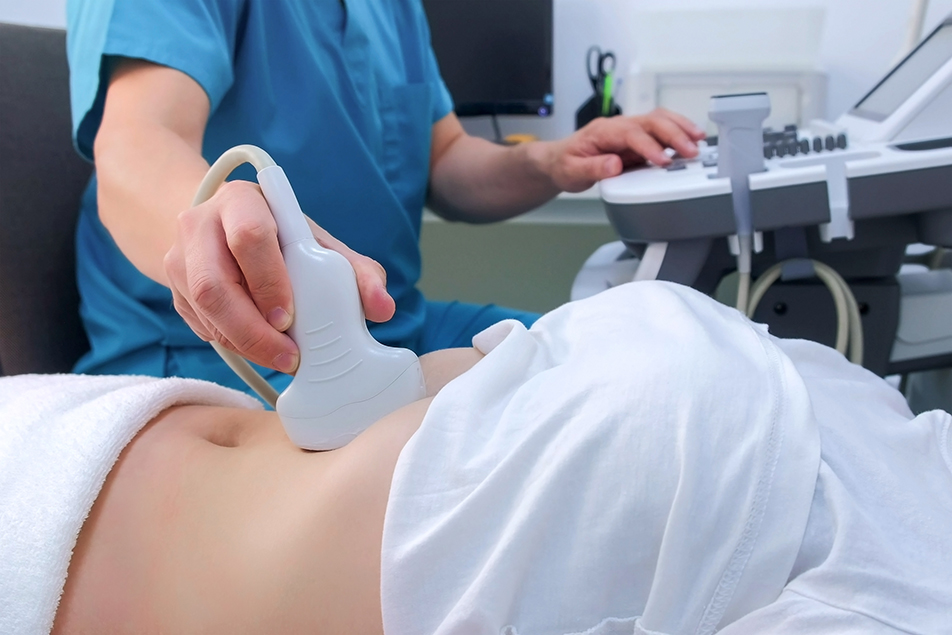
For some, hepatitis is a short-lived illness, but for others who become infected with the virus, it can develop into a long-term, chronic infection. Nicole Hartman, NP, PPG – Infectious Diseases, shares a brief overview of the condition and how it’s spread while highlighting a new noninvasive technique for diagnosing liver fibrosis.
An overview
Hepatitis refers to an inflammatory condition of the liver. It can occur due to medications, drugs, toxins and alcohol, but more commonly caused by a virus, such as Hepatitis A, B or C. Hepatitis C is one of the most common causes of chronic liver disease and the most common reason for liver transplantation. Many individuals with Hepatitis C do not have any symptoms or may only have nonspecific symptoms such as fatigue or sleep disturbances. Because of this, the Centers for Disease Control and Prevention (CDC) recommends, depending on risk factors, all adults 18-79 years of age be screened for Hepatitis C at least once in their lifetime.
Transmission, spread and testing
Hepatitis C is transmitted and spread through the blood, meaning healthy individuals could be exposed if they come in contact with an infected person’s blood. Individuals at highest risk for Hepatitis C include people with a history of injection drug use, those born between 1945-1965, individuals who had received blood products before 1992 when they began to consistently screen blood for Hepatitis C, and those who have received tattoos in an unregulated facility.
Hepatitis C testing is initially done with a blood test to check for the antibody to Hepatitis C. That will be positive if an individual has ever been exposed to Hepatitis C. But since some individuals can clear the virus independently, further testing is needed to check for an active infection if the antibody test is positive.
Long-term ramifications
Once exposed to Hepatitis C, the virus replicates in the liver, causing inflammation and injury with subsequent scarring or fibrosis. Over time, the scarred tissue replaces normal healthy liver cells, affecting blood flow and impairing liver function. Eventually, when fibrosis becomes severe, it is called cirrhosis.
A new form of evaluation
Assessment of the degree of liver fibrosis is essential for individuals who are getting evaluated for the treatment of Hepatitis C. In the past, the gold standard for assessing liver fibrosis was a liver biopsy, which is invasive, painful and has increased morbidity and mortality risks compared to less invasive testing, like a FibroScan®. A Fibroscan, or ultrasound transient elastography, can assess liver fibrosis by transmitting vibrations towards a person’s liver. The level of fibrosis is then calculated based on the velocity of the wave of vibrations through the organ.
A FibroScan is painless and currently done in the clinic by a nurse specifically trained to perform the procedure. Individuals receiving a scan shouldn’t eat or drink three hours before the procedure as food intake can increase the liver stiffness measurement. During the scan, participants lay on their back with their right arm raised above their head. The nurse places a probe on the right side of the rib cage, then captures ten satisfactory measurements, which providers will use to calculate liver stiffness.
The FibroScan measures the degree of liver fibrosis in kilopascals (kPa) and is generally between 2-6 kPa. Fibrosis scores can range from F0-F4. The greater the fibrosis score, the more likely you are to have severe liver damage. Let’s take a closer look at each score range:
- F0-F1: Indicates no liver scarring or mild scarring
- F2: Signs of moderate liver scarring
- F3: Suggests severe liver scarring
- F4: Advanced scarring or cirrhosis
Additionally, the score must be interpreted in relation to the disease-causing the injury. For example, Hepatitis C has a lower measurement to determine advanced liver scarring/cirrhosis (>14 kPa) than Hepatitis B (>18 kPa), and alcohol-related disease has the highest threshold at 19 kPa and above. And, while the operator has immediate access to the FibroScan readings, any results must be interpreted by the ordering provider before being released. For most individuals with Hepatitis C, measuring liver fibrosis with a FibroScan has shown similar results to those obtained through liver biopsy.
Final thoughts
If you or a loved one have never had a Hepatitis C test done, consider discussing it further with your primary care provider. For more information on Hepatitis A, B and C, please visit the CDC’s website.



